Dianthus armeria
Attractive, slender plants with small but vividly bright pink flowers, Deptford pinks are easily grown and add delicate beauty to many garden settings.
Once widely cultivated as a garden ornamental, in recent years their subtle nature has fallen out of favor for more robust species in the Dianthus genus.
But these hardy plants don’t give up easily and have become widely established as a non-native wildflower in North America!
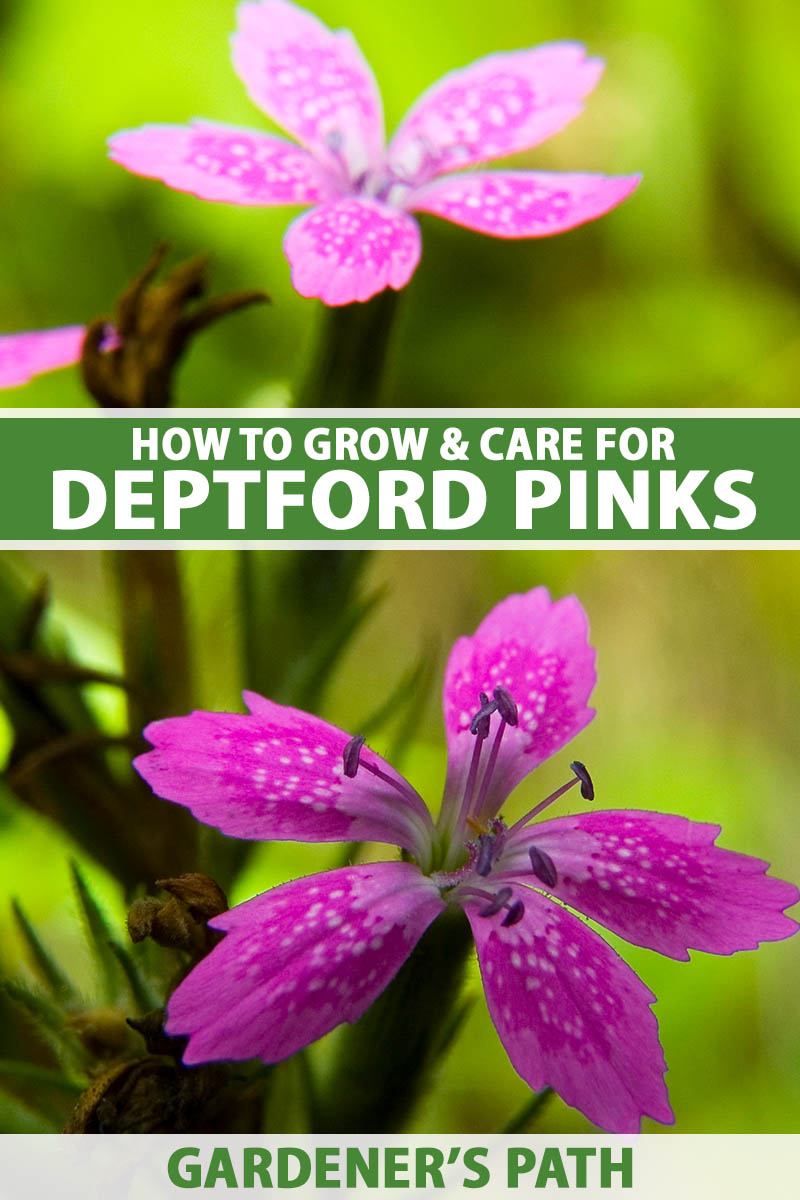
We link to vendors to help you find relevant products. If you buy from one of our links, we may earn a commission.
Often found growing in disturbed areas such as fields and meadows, or beside railroad lines, roadsides, and woodland paths, the pretty, fringed flowers grow in small clusters on lightly branched plants.
Annuals, biennials, or short-lived perennials, they flower from early to late summer and self-seed readily for a perennial-like performance. And unlike most other species in the genus, Deptford pinks are unscented and non-edible.
Their sweet nectar is attractive to pollinators such as butterflies and bees, but high saponin levels make them repellent to herbivores like deer, rabbits, and voles – and they’re also mildly toxic to humans and pets.
Even if they’re not currently trendy in the garden scene, these delicate-looking beauties still make a lovely, if understated, addition to the landscape.
With good cold and drought resistance, they’re ideal for cultivation in containers, rockeries, and gravel, wildflower, or xeriscape gardens – but they need a little “personal space” to thrive and are easily overcrowded in dense plantings.
Delicate looking, yes. But you’ll love how tough and adaptable they are in harsh settings!
If that’s the type of dianthus you need in your garden, join us now for a read on how to grow and care for Deptford pinks.
Here’s what’s coming up:
What You’ll Learn
What Are Deptford Pinks?
Deptford pinks, also known as grass or mountain pinks, are a species in the Dianthus genus known as armeria.
Native across Europe from the Caucasus region to Scotland, they are now naturalized in New Zealand and much of North America.
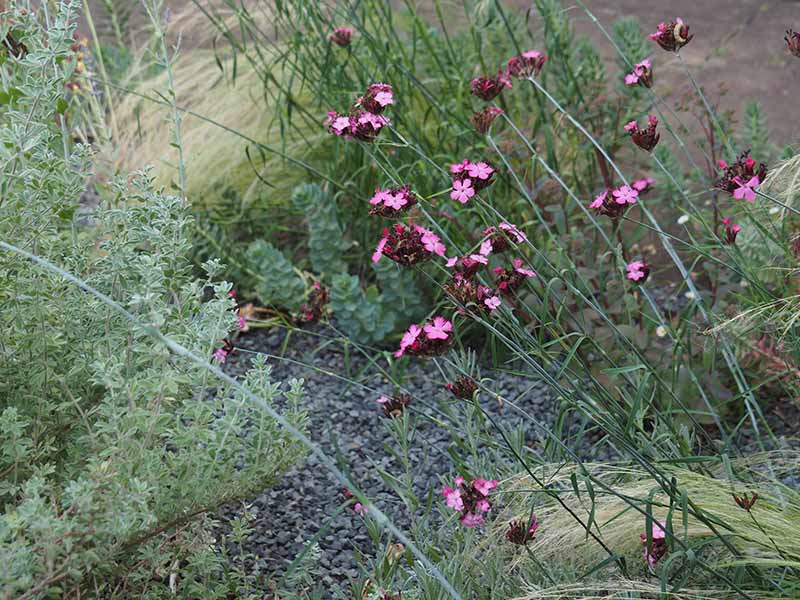
Their growth habit is annual or biennial, and in ideal conditions, they may survive as short-lived perennials for three years.
The demure flowers measure up to half an inch across and plants display many typical Dianthus characteristics – but on a more refined and subtle scale than popular garden varieties like sweet William (D. barbatus) and Cheddar pinks (D. gratianopolitanus).
Delicate, fringed petals are eye-catching in tones of shocking pink and sassily splashed with pale blush to white freckles. And a pretty line of burgundy, fuchsia, or red forms around the base of the petals in a contrasting ring.
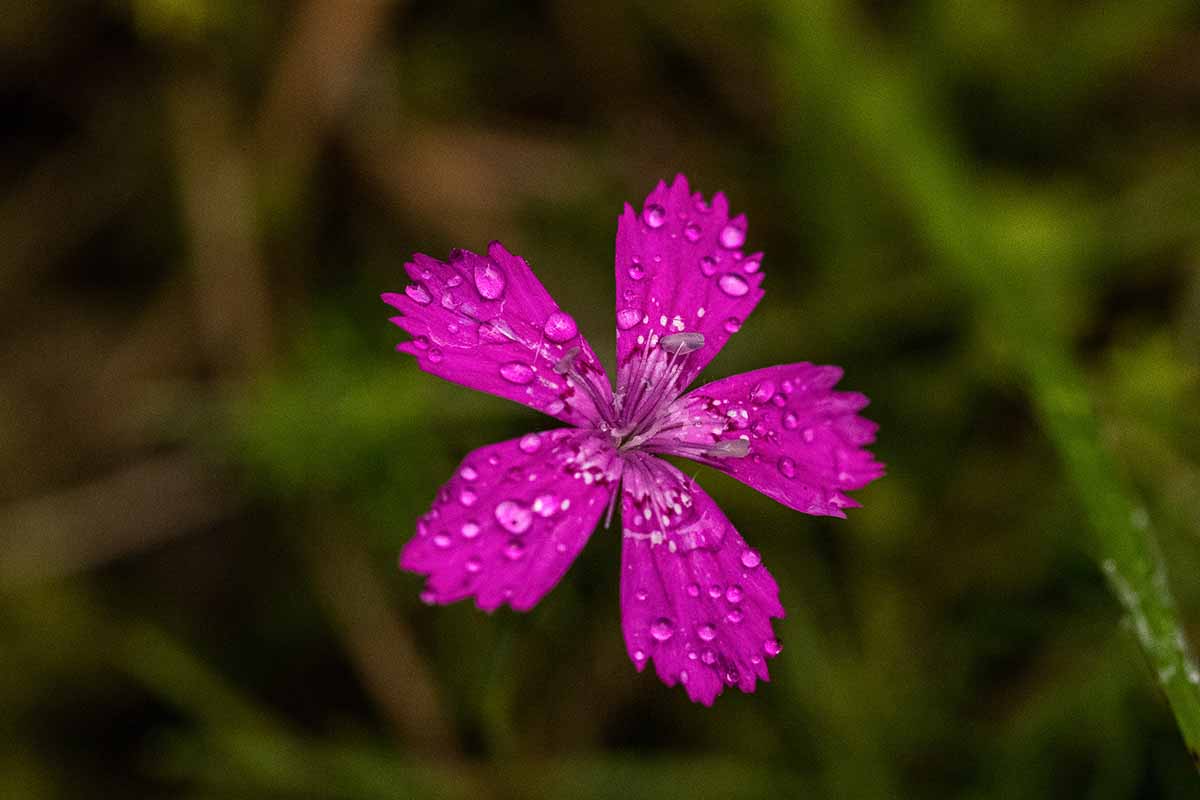
Growing up to 24 inches tall, plants bloom from July to September and flowers form in short-stalked clusters at the end of lightly branched, thin stems.
The medium green leaves in opposite pairs are sparsely spaced and the plants sprout from a modest taproot.
Although the flowers attract pollinators such as bees and butterflies, D. armeria is self-pollinating, and self-seeds readily without help.
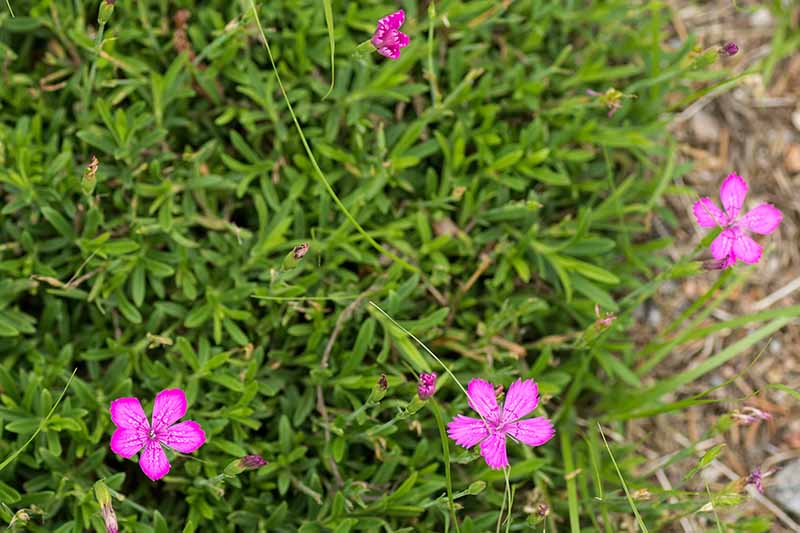
These plants flourish in open or disturbed sites such as field margins, pastures, and roadsides in low to middle elevations in full sun.
Their natural habitat typically features moderate to dry moisture conditions and coarse, gravelly, or heavy, well-draining soil.
With good cold and drought resistance, D. armeria is hardy in USDA Zones 3 to 8.
Cultivation and History
The name “Deptford pink” was coined in 1633 by naturalist Thomas Johnson.
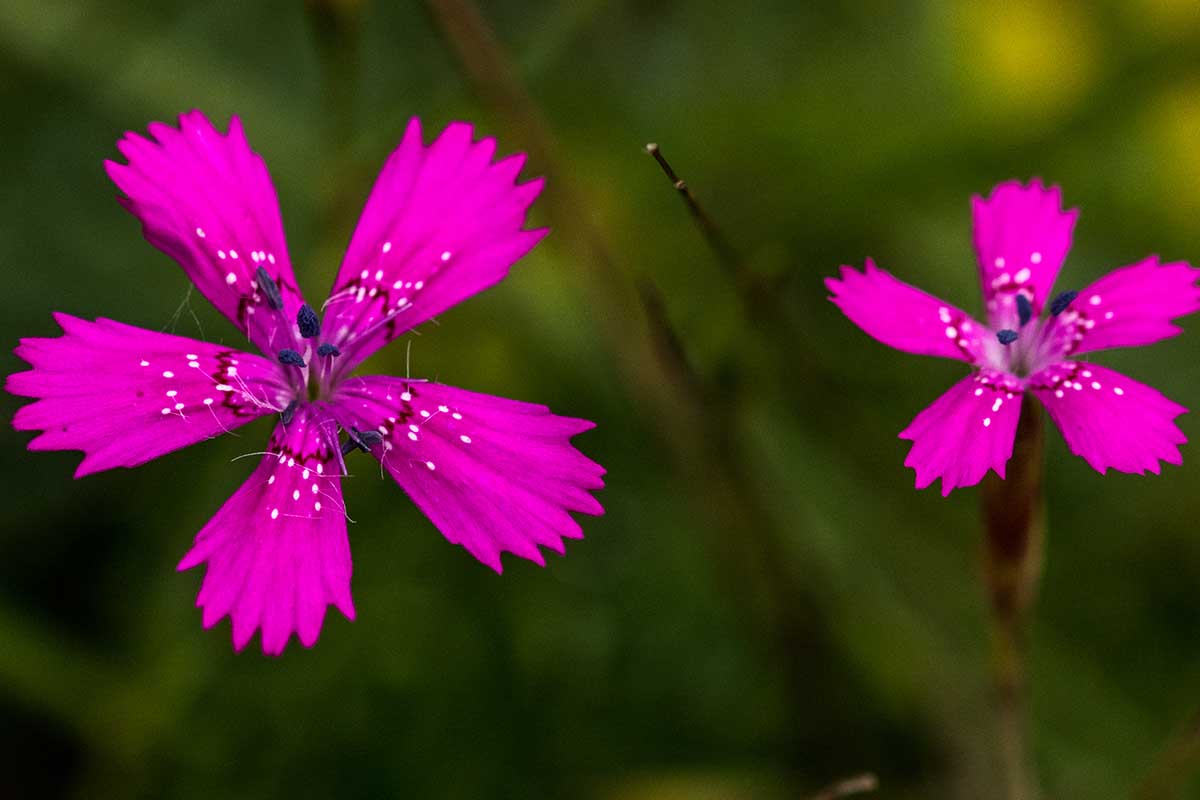
In his revision of “The Herball or Generall Historie of Plantes,” Johnson described a pink flower growing in the area of Deptford in east London.
However, this was actually a misidentification of maiden pinks (D. deltoides), and it’s uncertain if D. armeria ever grew in Deptford!
Native to vast regions of Europe including the UK, their numbers have decreased significantly in Britain and they’re now protected as an endangered species there.
Happily, the species still thrives in natural settings throughout the rest of Europe.
And thanks to their escape from cultivation in settlers’ gardens, these plants have flourished as a non-native wildflower in New Zealand and North America.
Propagation
Deptford pinks are best propagated from seed or stem tip cuttings – their slender taproot makes division difficult.
From Cuttings
Tip cuttings of non-flowering stems can be taken from mid-spring to early summer.
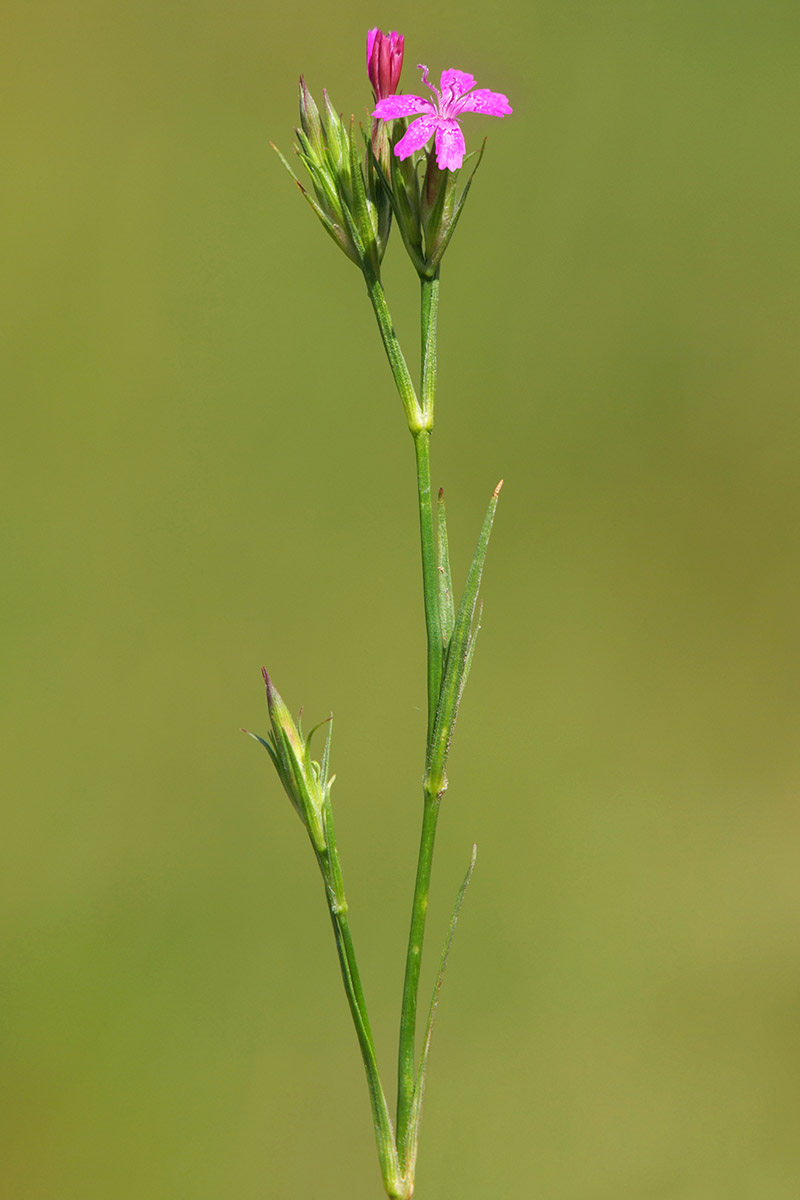
Use clean, sharp scissors or garden shears to cut stem tips about five inches long, cutting just below a set of leaf nodes.
Pinch out the tip and strip leaves away from the lower half, then dip the stripped end in rooting hormone if desired.
Fill trays or four- to six-inch pots with a finely textured potting medium, then insert stems into the soil up to the first set of leaves. Space cuttings evenly so the leaves aren’t touching so they have ample air circulation.
Gently firm the soil around the stems then water gently but thoroughly to saturate the soil.
Cover with a cloche, dome, or plastic bag.
Place in a bright location and keep the soil lightly moist until the cuttings have rooted, in about three to four weeks.
Remove covers every day or two for a couple of hours for air circulation, which helps to prevent fungal infections. Once new growth starts, remove the covers for good.
After the cuttings are rooted with new growth, pot up each stem in its own container and set in a warm, sheltered site in the garden with afternoon shade.
Plant out into the garden in early autumn or keep them in an unheated greenhouse or cold frame for transplanting the following spring.
From Seed
Direct-sown seeds usually don’t flower until the following year, but they can if started early enough.
For first-year flowers, sow seeds indoors from late winter to early spring, or six to eight weeks prior to your first predicted frost-free date.

To start seeds indoors, fill seed-starting trays or small containers with fine-textured and well-draining potting medium.
Sprinkle the seeds evenly and cover lightly with soil, about an eighth of an inch deep.
Water gently to moisten the soil then cover with a cloche, dome, or plastic bag to create a greenhouse effect.
Set in a bright location and keep the temperature at 60°F until germination, which typically happens in seven to 14 days.
After seedlings emerge, remove the cover every couple of days to allow for air circulation.
When the seedlings have two or three sets of true leaves, you can transplant them into the garden or larger containers after all risk of frost has passed.
To direct sow outdoors in spring, cold stratify first by mixing the seed with slightly moist landscape sand and storing it in the refrigerator for 30 days.
After all danger of frost has passed, you can sow the stratified seeds an eighth of an inch deep in fertile, well-draining soil.
When the seedlings are four to six inches tall, thin them so they are 10 inches apart.
Seeds can also be sown outdoors in autumn to naturally stratify outdoors through the winter before germinating in spring.
How to Grow
Although they adapt well to poor soils, D. armeria does best in fertile, well-draining soil with a gritty or sandy texture, full sun exposure, and a neutral pH of 6.0 to 8.0.
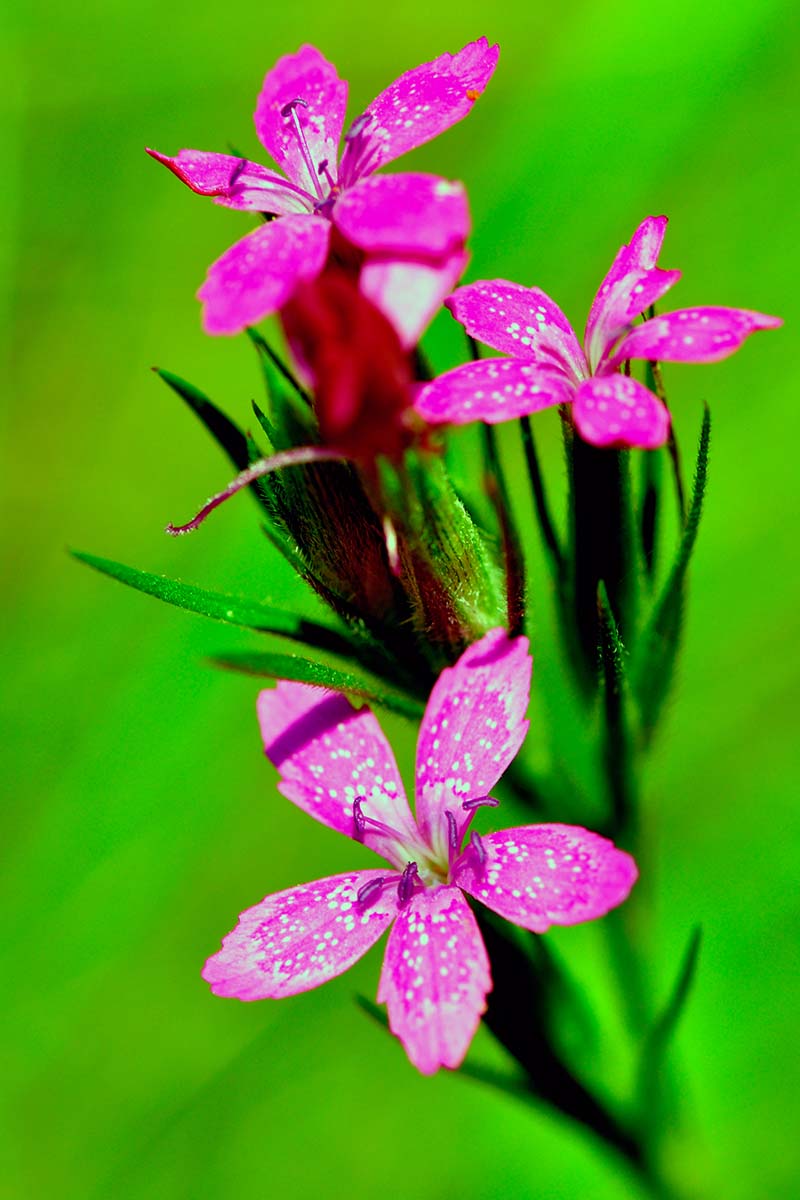
Prepare the planting site by first enriching the soil with some compost.
If needed, add granite chips, landscape sand, or pea gravel to improve drainage and texture – Dianthus species need well-draining soil to prevent issues such as crown and root rot.
I like to mix in one to two tablespoons of bone meal to promote robust, healthy roots.
Set plants in place so the crown is just above the soil. Backfill and firm the soil lightly.
Once the plants are in place, water gently and deeply. Once established, water deeply once a week, waiting until the top two inches of soil feels dry between water applications.
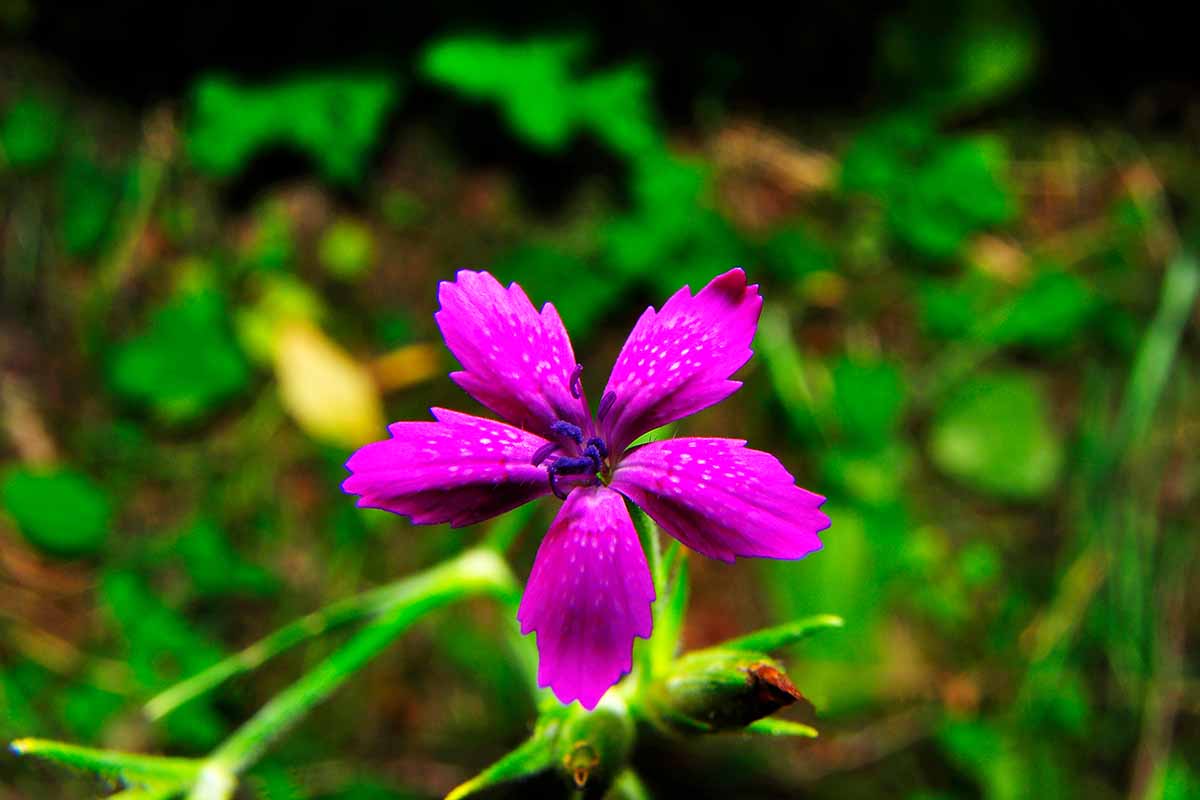
To prevent problems like fungal infections and crown rot, use moisture-retentive mulches sparingly and only over the root zone, keeping it away from the crown.
For container growth, use well-draining, humus-rich soil. Amend as described above with compost and/or sand as needed.
Use containers with drainage holes, and place a two-inch layer of drainage material such as broken pottery or pebbles over the holes to prevent waterlogged soil if you wish.
Fill with soil and mix in one to two tablespoons of bone meal per gallon of soil.
Set plants with the crown just above the soil line then water deeply but gently to settle in place.
Containers typically need to be watered more frequently but keep to the routine of allowing the top two inches of soil to dry between water applications.
Growing Tips
Easily cultivated, the following tips can help ensure your Deptford pinks thrive:
- Grow in a full sun location.
- For best results, plant in fertile, well-draining soil.
- Allow the top two inches of soil dry out between water applications.
Pruning and Maintenance
To extend the flowering season, deadhead spent flowers on a regular basis to encourage reblooming.
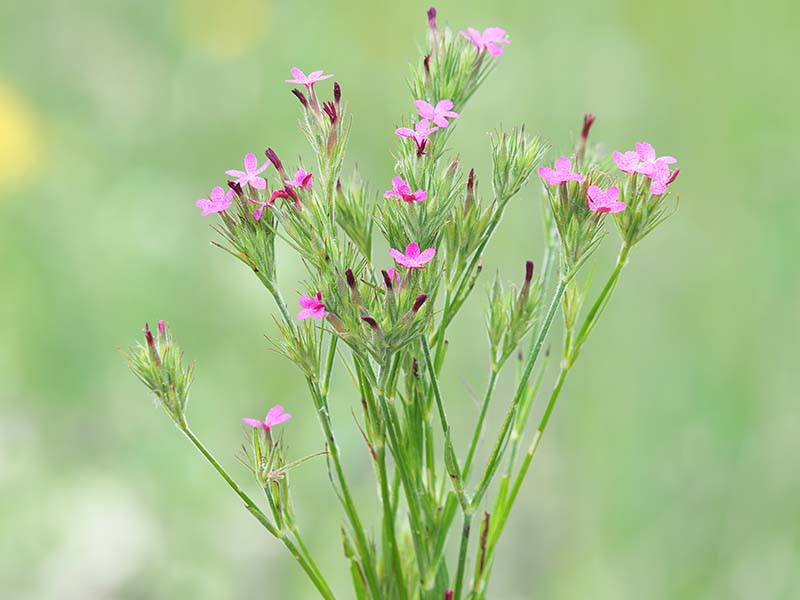
Feed garden plants and containers monthly with a water-soluble or slow-release granular fertilizer from early spring to mid-August. Use an all-purpose, balanced formula such as 10-10-10 NPK.
An organic, all-purpose granular fertilizer with a 5-5-5 NPK is available at Burpee.
Or you can apply a two-inch layer of compost in early spring. Gently loosen the soil around the root zone before laying down compost or well-rotted manure, taking care to keep moisture-retentive materials away from the crown to avoid crown rot.
Before winter sets in, trim dead flower stems and clean beds of dead or decaying material to prevent unfriendly pathogens from overwintering in the debris.
In winter, use only free-draining mulches like pea gravel to protect against freeze/thaw cycles. Cover the root zone with two to four inches of gravel, leaving the crown clear.
Move containers into a sheltered spot such as next to foundations or walls or move them into an unheated garage or shed for winter protection. Water lightly once a month to keep the roots alive.
Replace containers in the garden once the chance of freezing weather has passed.
To harvest flowers for floral arrangements, cut long stems and place in water immediately, stripping away any leaves that sit below the water line.
To harvest seeds, at the end of the growing season, allow the last round of flowers to set seed. When the pods are dry and brown, shake them into a dish or paper bag to collect then store in a cool, dry location out of direct sunlight.
For self-seeding, allow the seeds to disperse on their own, or shake the ripe seed pods where you’d like to see new plants. Gently scratch them into the soil or cover lightly with one-eighth of an inch of finely textured compost.
Where to Buy
Once a popular choice for ornamental gardens, it can now be challenging to locate Deptford pink seeds outside of native wildflower centers.
However, we did find seeds in resealable mylar packets from Everwilde Farms that are available at Walmart.
Managing Pests and Disease
Deptford pinks are hardy plants with few problems but they can be bothered by the following issues.
Sapsucking aphids are a common problem. These pests cause yellowing of leaves and stems that can weaken plants.
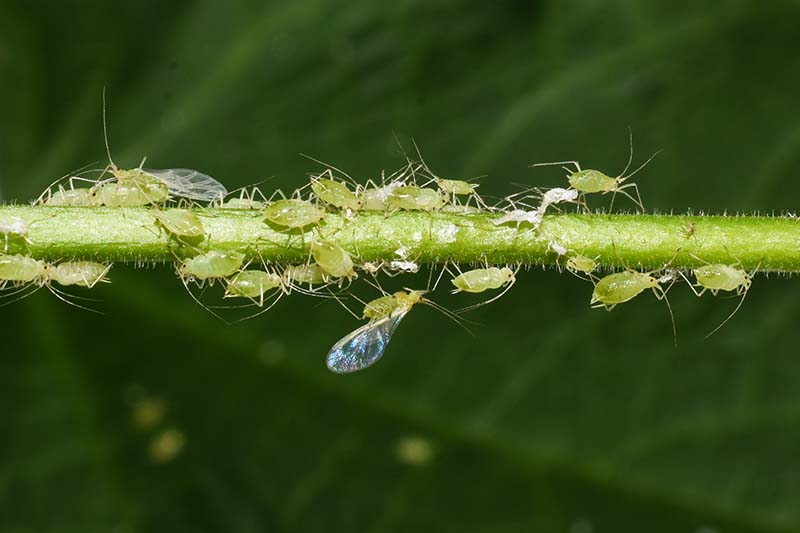
Usually a strong jet of water from the garden hose is enough to dislodge them – repeat as needed until plants are de-bugged. For dense infestations, use a natural pesticide like neem oil to spray plants.
Fusarium wilt (Fusarium oxysporum) and pythium root and stem rot (Pythium spp.) cause stunted or uneven growth, wilting, and crown rot.
As these are caused by soilborne pathogens, remove and destroy infected plants and ensure new plants are set in a well-draining, sterile medium. Avoid overwatering and overhead watering – splashing water quickly spreads these diseases.
Composted pine bark mixed into the soil also offers a degree of prevention against Pythium water molds.
Rust is a fungal disease that causes small brown-to-rust blisters on the leaves and stems, cracking, yellowing, and plant decline.
Caused by Uromyces dianthi, gardeners who spot signs of rust should remove and destroy infected sections and provide ample spacing for good air circulation. Avoid overhead watering or watering late in the day.
Best Uses
With their delicate, long stems and bright flowers, Deptford pinks make a striking addition to many garden settings and are best suited to areas where they can have their own space without crowding.
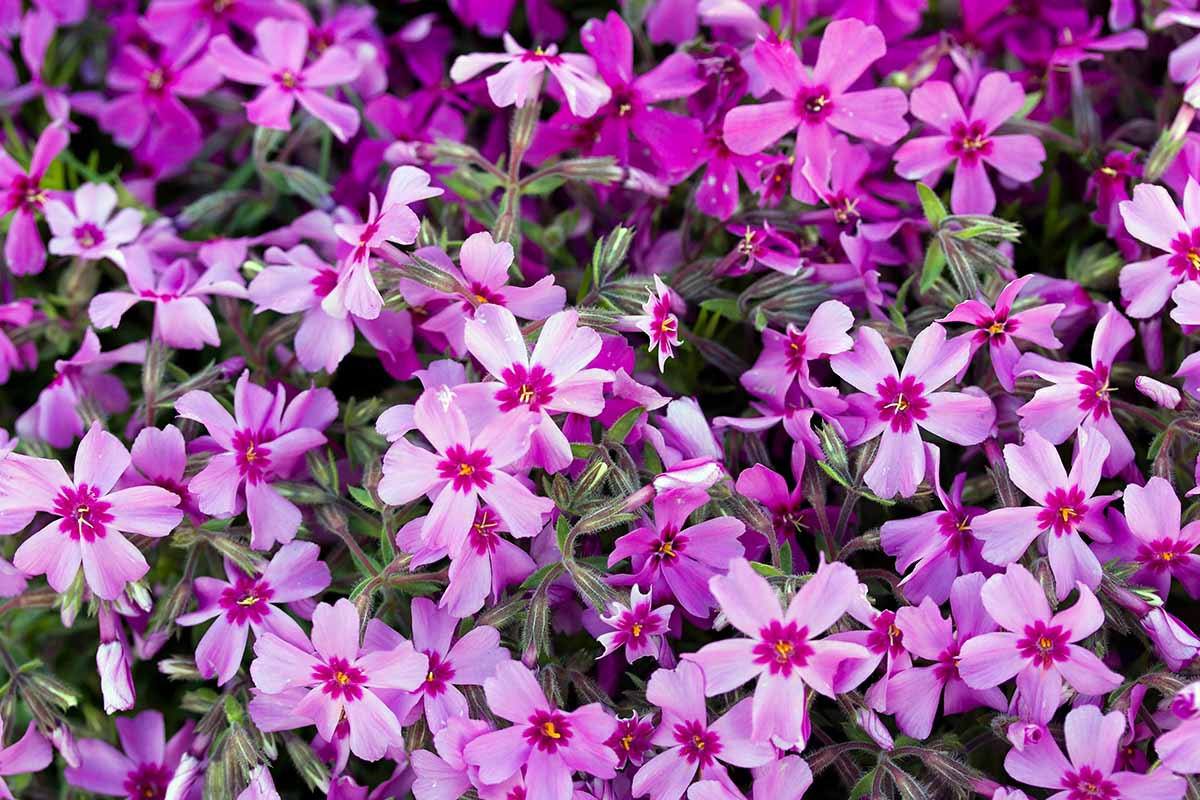
Given their good drought tolerance, they make an excellent choice for xeriscapes and low-irrigation landscapes, and they shine in pockets throughout gravel and rock gardens.
They also work well in naturalized settings like native flower gardens, wildflower meadows, and woodland fringes.
Plus, they make a sweet addition to containers.
And you’ll want to add some to the cutting garden as well for long-lasting, non-fragrant accents in floral arrangements.
Quick Reference Growing Guide
| Plant Type: | Short-lived perennial | Flower / Foliage Color: | Freckled shocking pink/medium green |
| Native to: | Europe | Water Needs: | Low once established |
| Hardiness (USDA Zone): | 3-8 | Tolerance: | Deer, rabbits, rodents |
| Bloom Time/Season: | Summer | Maintenance: | Low |
| Exposure: | Full sun | Soil Type: | Sandy loam |
| Time to Maturity: | 180 days | Soil pH: | 6.0-8.0 |
| Spacing: | 10 inches | Soil Drainage: | Well-draining |
| Planting Depth: | 1/8-inch (seeds), depth of container (transplants) | Attracts: | Bees, butterflies |
| Height: | Up to 24 inches | Uses: | Containers; cut arrangements; gravel, rock, and xeriscape gardens; naturalized settings |
| Spread: | 18 inches | Family: | Caryophyllaceae |
| Growth Rate: | Moderate | Genus: | Dianthus |
| Common Pests and Diseases: | Aphids; Fusarium wilt, Pythium root and stem rot, rust | Species: | Armeria |
Delicate, But Tough
Deptford pinks are delicate looking but they have a tough nature!
Cold and drought resistant, they add a dainty appeal to many garden settings and are well-suited for theme gardens or naturalized landscapes where they have room to strut their stuff.
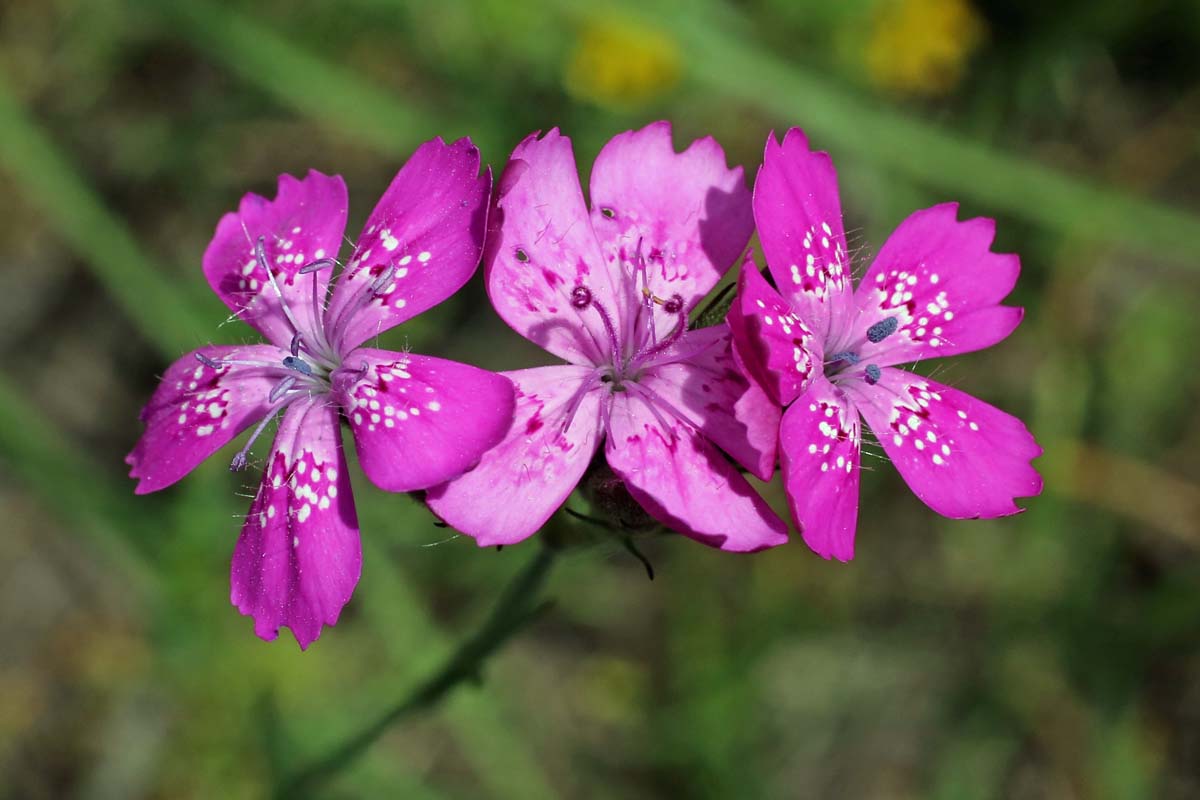
Remember to plant them in well-draining soil and deadhead spent flowers for healthy plants with a long flowering season.
Do you folks use D. armeria in your garden? Let us know your favorite ways to use Deptford pinks in the comments section below.
And to learn more about pretty, flowering dianthus, add these articles to your reading list next:
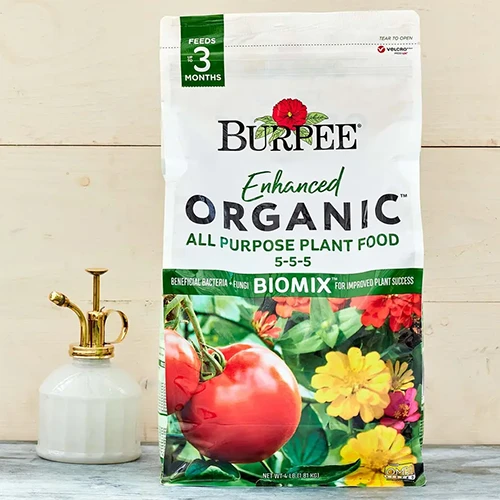
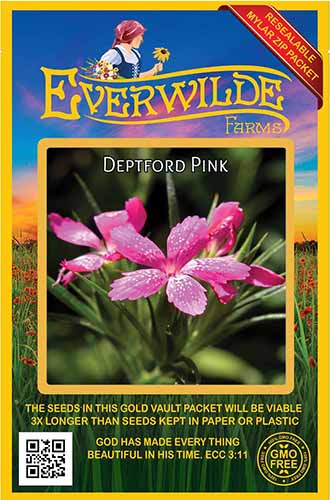


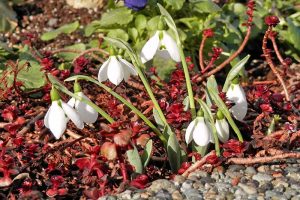
Hey Telkom, you’ll find all the cultivation and maintenance conditions for D. armeria outlined in the above article.